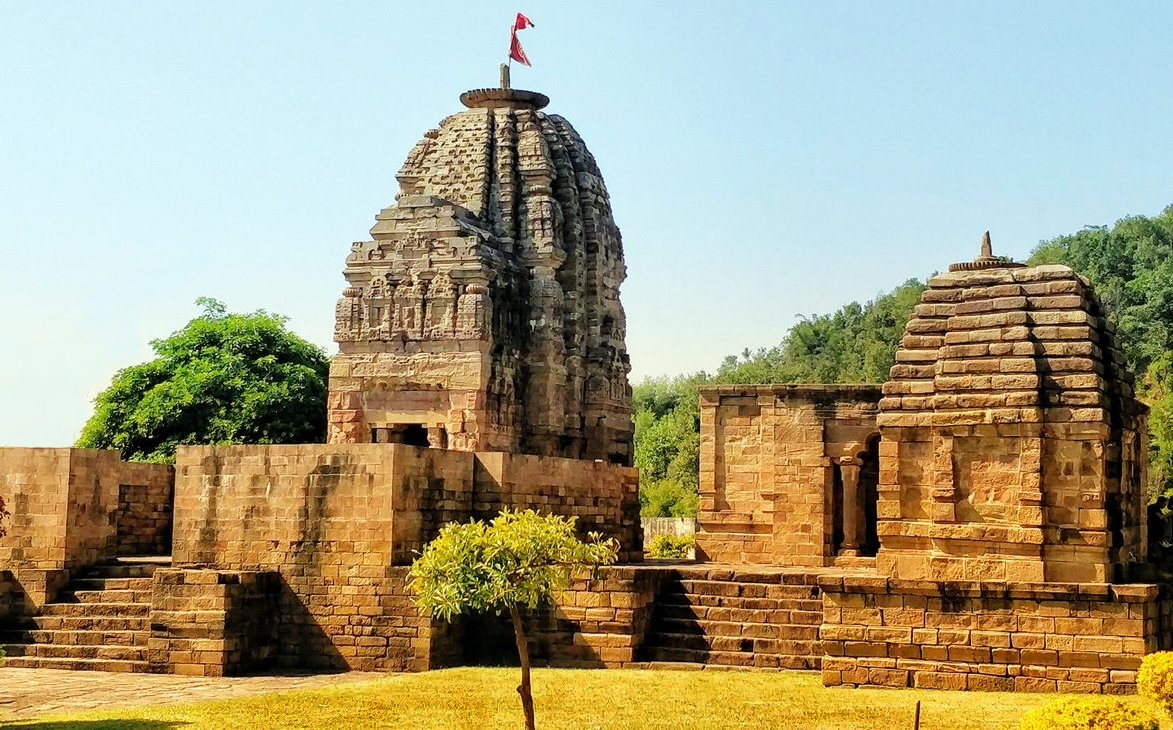Krimchi Temples
Emperor Jehangir’s “Paradise on Earth” is rich in valleys, rivers, lakes and enchanting snow-capped mountains. Few are aware, however, that the grandeur of Kashmir goes far beyond its beautiful landscapes. Endowed with numerous temples such as the Sankara-Gauresvara, Pandrethan, Shiva Bhutesa and Goverdhanadhara, Kashmir is a crucible of ancient heritage across religions and some breathtaking natural beauty. Perhaps one of the most intriguing edifice you’ll come across in the valley is the complex of the Krimchi temples. Canta Dadlaney takes you through the ruins of Krimchi temples that transport you to a bygone history marked with riches and royalty
Kashmir was once imbued with Hinduism and spirituality, deeply influenced by Kashmiri Shaivism, a non-dualistic tradition that dates back to 850 CE. Swami Lakshman Joo, a Kashmiri Hindu, was instrumental in reviving Kashmiri Shaivism. The ruins of the Krimchi Temples are captivating structures situated at a distance of about 14 km from the city of Udhampur in southwestern Jammu and Kashmir. These temples are considered to be the oldest in the State of Jammu, dating back to the period between the 8th and the 9th centuries. While no written information exists today to validate their history, the stories behind the construction of these temples are numerous. Some say they were built by King Kichak of the Mahabharata, (the ancient historic war fought between the Pandavas and the Kauravas) while others state that they were built by the Pandavas, who after being sent into exile, spent a lot of their time in this region. This accounts for these temples popularly referred to as the ‘Pandava Temples’.
Destination Krimchi
A 30-minute drive by road from Udhampur city brings you to this complex which includes a total of seven temples, four large ones facing the east and three small ones facing the west. Built on the banks of a stream, the temples are surrounded with lush foliage and a vast range of colourful flowers. The main temple stands at a towering height of 50 ft and is dedicated to Hindu deities such as Lord Shiva, his consort Goddess Parvati, their child, Lord Ganesha, and Lord Vishnu.
A history of grandiose
Krimchi was the brain-child of King Kichak, a contemporary of the Pandavas who defeated and killed him. The lineage of royals who ruled Krimchi is lengthy, with some of the notable rulers being King Dayakaran (the son of King Puran Karan), King Bahadur Singh and King Himmat Singh.
Temple architecture
For the convenience of visitors and tourists, the temples have been marked from one to seven. Temple number 3 is the oldest and temple number 1 appears as the most decorated one. A lot of information has been concisely detailed throughout the temples to give an insight into the background of this sacred place. Many attribute the architecture of these temples to Greek influences, though some local folk state that the architecture is influenced by the Nagra style of North India. Some believe that they were built by the Pandavas while others affirm that they were built by the Dev dynasty of Jammu.
The eroded walls depict faded abstract impressions and the structures appear very similar to other Indian temples at Chamba, Bhubanewswar and Bharmour. The pillars bear discrete foliage motifs which speak volumes for the creativity of that time.
In the past, archaeologists and researchers, in the course of excavations, discovered stone idols, iron arrowheads, earthen pots and other ancient paraphernalia which are exhibited for all to see. The excavations have now been stopped to retain the historical importance of these monuments which have a unique story of their own.
Walking amongst these ancient ruins transports one to a mystical era of a past, deeply mired in spirituality and engulfs one in an unknown serenity and calm. These ancient temple ruins make for a very popular tourist attraction and are a must-visit for curious minds and solace-seekers. Many a request has been put forth for this temple complex to be deemed as a World Heritage site, but to no avail.
Timings: 6.00 am – 6.00 pm.





























